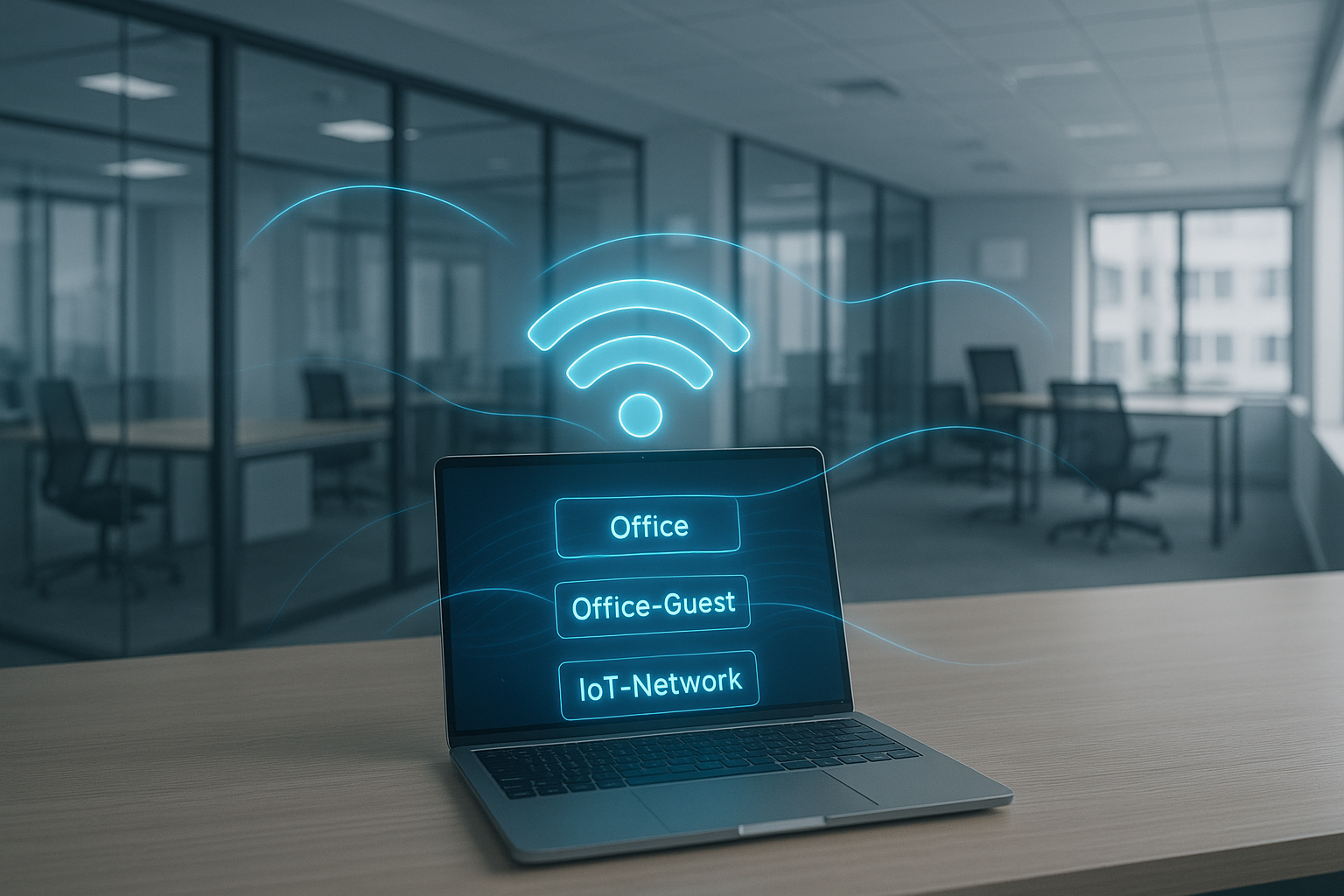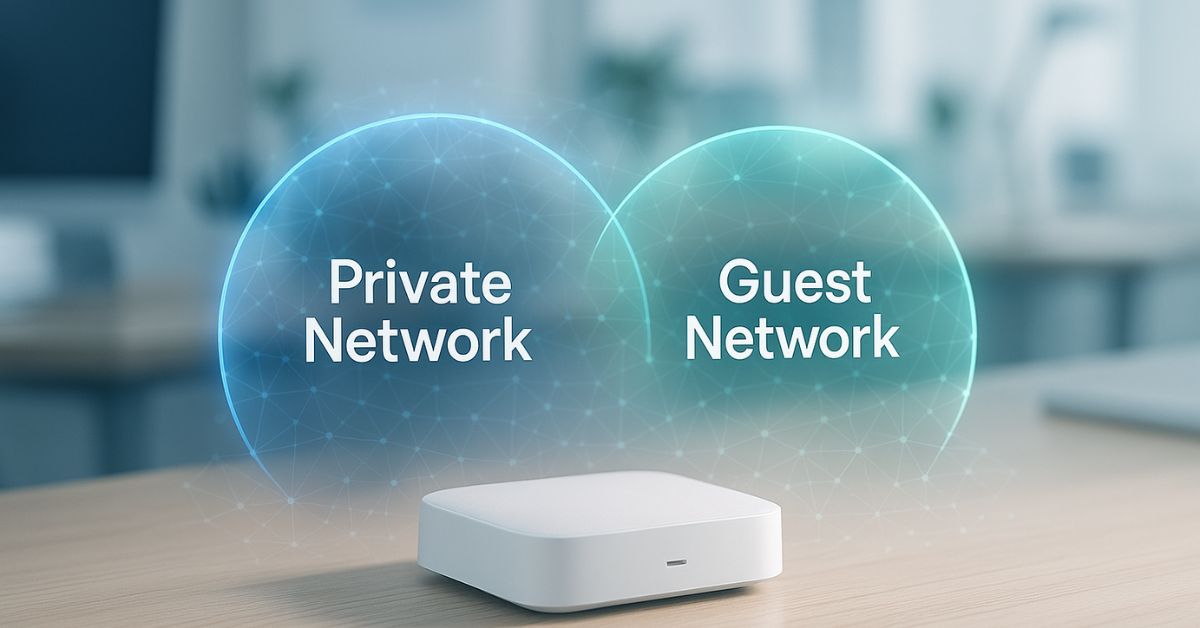The Service Set Identifier (SSID) is a crucial concept in WiFi networking that determines how devices find, recognize, and securely connect to wireless networks. SSIDs are especially important for environments offering guest access, allowing visitors to connect to the internet without compromising internal network security. In this article, we explore what SSID means, how it functions, and best practices for guest WiFi networks, including clear steps, practical security advice, and actionable recommendations for both individuals and businesses.
What Is an SSID?
An SSID is the technical name for a WiFi network's visible identifier, the "network name" you choose from the list when connecting your phone, laptop, or tablet to the internet. Each wireless router or access point broadcasts its SSID to nearby devices, making it discoverable and distinguishable from other networks in the area. For example, you might see network names like "Home_WiFi," "CoffeeShop_Guest," or "OfficeNetwork" when searching for available connections. SSIDs can be up to 32 characters long, including letters, numbers, and even special symbols like dashes or underscores.
The SSID allows users to:
- Easily identify available WiFi networks on their devices
- Distinguish between multiple networks in areas with overlapping coverage
- Automatically reconnect to preferred networks, SSIDs are stored by devices after a successful connection for seamless future access
Why SSID Matters for Guest WiFi
Providing a guest network is now a best practice for both homes and businesses that host visitors. A guest WiFi network is a dedicated connection, broadcasting its own SSID, that grants internet access to guests while keeping sensitive internal resources isolated. This separation is essential for maintaining both privacy and security.
How Guest Access Works
Guest networks operate on a separate SSID from the main network. Devices that connect to the guest SSID are usually restricted from accessing files, printers, smart home devices, or mission-critical business systems on the primary network, thus creating an isolated environment for visitors.
This network isolation ensures guests receive internet access without posing a risk to private information or internal digital assets. It's the corporate equivalent of welcoming guests into a waiting room, providing comfort but keeping sensitive areas off-limits.
Setting Up and Naming Guest SSIDs

Configuring a guest WiFi SSID is straightforward on most modern routers and access points. Here are the core steps for setup and naming:
1. Access Router Settings
Log in to your router's admin console, typically via a web browser and specific IP address (e.g., 192.168.1.1).
2. Enable Guest Network Feature
Find the relevant "Guest Network" or "Wireless Settings" menu and enable guest network functionality.
3. Set a Unique SSID
Choose a clear and easily recognizable SSID for guest access. Common formats include "Office-Guest," "CoffeeShop_Guest," or by appending "-Guest" to your main network's name. This direct labeling helps visitors quickly identify the correct network when connecting, minimizing confusion.
4. Configure Security
Assign a strong password using modern encryption protocols (WPA2 or WPA3 preferred). Update the password regularly and communicate it securely to guests.
5. Isolate Guest Traffic
Enable settings like "Access Isolation" or "Allow Guests Only Internet Access." These functions restrict guest devices from interacting with internal networks or each other.
6. Set Bandwidth Limits and Consider Captive Portals (Optional)
Implement Quality of Service (QoS) to ensure guests don't consume excess bandwidth.
For businesses that want more control over guest access, consider adding a captive portal. Captive portals are authentication pages that appear when users first connect to your guest SSID, before they can access the internet.
Why Businesses Add Captive Portals to Guest SSIDs
A basic guest SSID with password provides isolation but no visibility into who's using your WiFi or ability to communicate with guests. Captive portal platforms like Spotipo transform anonymous access into a business asset through:
Marketing and Customer Engagement: Capture emails/phones automatically, build marketing databases from foot traffic, send follow-up campaigns, run targeted promotions.
Brand Experience: Display branded splash pages with logos and messaging, welcome guests with custom content, create different experiences per location.
Access Control: Require authentication (email, SMS, social login), set session limits and bandwidth restrictions, require terms of service acceptance.
Business Intelligence: Track connections and peak times, identify return visitors, understand device types and usage patterns.
Revenue Opportunities: Offer tiered access (free basic, paid premium), provide voucher codes tied to purchases, create upsell opportunities, monetize access.
Spotipo works with UniFi, MikroTik, Cisco, TP-Link, Ruckus, and other major router brands, layering on top of your guest SSID without requiring infrastructure changes or hardware replacement.
SSID Naming Best Practices for Guest Networks
Choosing the right SSID name impacts security, user experience, and branding:
Clarity: Make it obvious which network is for guests. Use "Guest," "Visitor," or organization name plus "Guest."
Security: Avoid revealing sensitive information. Don't include location, departments, or network structure hints.
Branding: Incorporate company name for recognition and professionalism ("Company-Guest"). Combined with branded captive portals, this reinforces brand identity.
Avoid Duplicates: Ensure your SSID is unique in your area to prevent connection confusion.
Example SSID formats:
- "CompanyName-Guest"
- "Guest-WiFi" (generic for public spaces)
- "CaféName-FreeWiFi"
Security and Privacy Considerations

SSIDs identify networks but don't provide security. Security comes from WPA2/WPA3 encryption and proper password management. Additional recommended steps:
- Regularly update passwords for main and guest networks
- Use network isolation to prevent lateral movement
- Monitor guest traffic for suspicious activity
- Educate guests via captive portal terms of service
- Consider authentication beyond passwords for business environments
For regulated industries or those collecting guest information, captive portals provide audit trails documenting network access, creating records that simple SSID/password combinations cannot.
Common Guest SSID Mistakes and How to Avoid Them
Even with proper SSID setup, businesses often make mistakes that reduce security or limit WiFi's business value:
Mistake 1: Static Passwords Shared Publicly
Using the same guest WiFi password forever means former employees, past customers, and unauthorized users retain permanent access.
Solution: Spotipo's SMS one-time passwords or email authentication create unique, verified access per connection. Voucher systems issue temporary codes that expire automatically.
Mistake 2: No Legal Protection
Open guest WiFi without terms of service exposes businesses to liability for guest activities.
Solution: Spotipo requires explicit terms of service acceptance before access, creating documented records with timestamps for legal protection.
Mistake 3: Zero Marketing Value
Hundreds of customers connect monthly, but businesses collect no information for follow-up or relationship building.
Solution: Spotipo captures guest information at connection, transforming anonymous WiFi access into a growing marketing database of engaged local customers.
Mistake 4: No Usage Visibility
Without analytics, businesses can't answer: How many guests connect? When are peaks? Are guests returning?
Solution: Spotipo's dashboard tracks connections, identifies return visitors, shows peak patterns, and enables data-driven capacity decisions.
Mistake 5: Inconsistent Multi-Location Experience
Different SSIDs, passwords, and experiences at each location create friction for customers visiting multiple sites.
Solution: Spotipo manages consistent SSID naming, branding, and authentication across all locations from one dashboard.
Troubleshooting Common Issues

If guests struggle to connect or cannot see the guest's SSID:
- Confirm the guest network is enabled and broadcasting
- Double-check SSID spelling and visibility
- Restart the router and update the firmware
- Ensure sufficient bandwidth for expected usage
For devices connecting to the wrong SSID, remove old network profiles and reconnect to the intended guest network.
With captive portals, verify authentication redirects function correctly and provider servers are properly configured in router settings.
Beyond SSID: Adding Authentication to Your Guest Network
Setting up a guest SSID provides network isolation, but most businesses want control over access and the ability to capture guest information for marketing. This is where captive portals come in.
What Captive Portals Add to Your Guest SSID
Once your guest SSID is properly configured with network isolation, a captive portal like Spotipo adds:
Authentication Layer: Require email, SMS one-time password, or social login before granting access. Know who's using your network.
Branded Experience: Display your logo, colors, and messaging instead of generic WiFi screens.
Legal Protection: Require terms of service acceptance, documenting agreement to acceptable use policies.
Marketing Database: Automatically collect guest contact information, building a marketing list from every connection.
Access Control: Set session time limits, bandwidth restrictions, and device limits per user.
Analytics: Track connections, peak times, return visitors, and device types to understand guest behavior.
Multi-Location Management: Manage all guest SSIDs and portals from a single dashboard across multiple locations.
How Spotipo Works With Your Guest SSID
Spotipo doesn't replace your router or change your SSID configuration. Instead, it works with your existing guest network setup:
- You configure a guest SSID on your UniFi, MikroTik, Cisco, or other router (following the steps in this article)
- You connect your router to Spotipo's platform through a simple integration
- When guests connect to your guest SSID, they're automatically redirected to Spotipo's captive portal
- Guests authenticate (email, SMS, social login) and accept terms
- Spotipo grants them internet access on your guest network
- You collect their information and can send follow-up marketing campaigns
This layered approach means you maintain control of your network infrastructure while adding powerful authentication and marketing capabilities on top.
Real-World Examples: How Businesses Use Spotipo With Guest SSIDs
Coffee Shops: Set up "CaféName-Guest" SSID with Spotipo's branded splash page. Customers enter email to connect, building hundreds of local contacts monthly for promoting new menu items and events.
Hotels: "HotelName-Guest" SSID with room number authentication ties access to registered guests. Track peak usage, collect emails for post-stay surveys, and promote spa services through portal.
Retail Chains: Consistent "BrandName-Guest" across 50 locations managed from one dashboard. Customers authenticate once and auto-reconnect at any location. Marketing team segments by store location for geo-targeted promotions.
Airports: Regional airports use Spotipo-managed guest SSIDs for free WiFi while capturing passenger data. Analytics inform retail tenant selection and targeted splash page promotions for parking, dining, and shopping.
Learn more about Spotipo's captive portal solutions or start a 14-day free trial.
Conclusion
The SSID is fundamental to WiFi networks, acting as the visible gateway for all connections. For organizations and homes, creating a distinct, secure guest SSID is essential for balancing accessibility and privacy. Following best practices for setup, naming, and security offers seamless internet access while protecting your main network and sensitive data.
Once you've configured your guest SSID and network isolation, add a captive portal layer for authentication, branding, and guest data collection. This transforms guest WiFi from a courtesy amenity into a valuable business asset that protects your network, builds your marketing database, and reinforces your brand.
Understanding SSID is the first step to mastering safe, user-friendly wireless networking. Integrating smart authentication tools like Spotipo is the second step to maximizing the business value of your guest WiFi investment.







